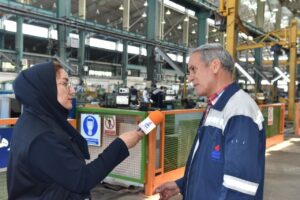“Rahbord Energy”: Today, industrial countries are struggling to benefit from clean and renewable energies, so they will be able to cut their dependency to fossil fuels.
The importance of sustainable development agenda and the necessity of supplying energy needs for future generations make the use of renewable energy more reasonable.
Also oil mega companies are seeking the commercialization of renewable energies.
According to International Energy Agency (IEA) by the year 2050, solar power could eclipse fossil fuels, hydro, wind and nuclear as the world’s most widely used source of electricity generation. IEA technology roadmaps solar PV could conceivably be used to generate up to 16 percent of the world’s electricity needs by mid-century, with solar thermal electricity (STE) generated by concentrating solar plants (CSP) could provide an additional 11%.
By 2050, according to IRENA the Renewable energy opportunities Nexus in the energy, water and food are 80%, 55% and 60% respectively.
As Iran’s vast and significant resources of Solar, Wind, Geothermal and Biomass energies along with its special geopolitical location have made the country one of the best areas for investment in renewable energy. Iran’s renewable energy industry is at a nascent stage at the present time.
To help speed up renewable energy production and fulfill the set targets, the Iranian government has facilitated investment rules and offered incentives to encourage both local and foreign investors to cooperate on the renewables sector.
Renewable energy can gradually replace fossil fuels to meet Iran’s growing household and industrial needs for energy. Renewable energy can also help Iran have more control over possible price fluctuations in oil & gas prices. Other than being a source of improved energy security, renewable energy provides Iran with export opportunities as well. Iran’s energy diversification strategy has already begun to bear fruit.
Iranian policymakers have shown great interest in renewable energy sources to improve energy security, reduce internal dependence on hydrocarbons, and meet its projected growth in electricity demand.
Also Iran’s high level of energy consumption and CO2 emissions, and costly electricity production by fossil fuels which are highly subsidized by the government, are just some of the reasons why Iran’s government are keen to utilize these natural conditions to attract private sector investments in the renewable energy market.
Despite the challenges the renewable energy market offers the opportunity to accomplish a long-lasting “win-win” situation for both international investors and Iran.
During the sanctions era, Iran’s plan for investment in renewable energy projects would have appeared highly ambitious and very difficult to achieve.
But in post sanction era, in the eyes of many experts, the country’s investment goals of $10 billion by 2018 and $60 billion by 2025 now appear quite feasible.
Iran’s Renewable Energy industry faces with challenges such as:
1. Ergonomic & Safety,
2.Technology,3.Regulating,
4. Policy-Making,
5. Planning & Administration,
6. Finance Project.
Despite various challenges, in renewable energy industry, Iranian government has strong commitment to diversifying its energy mix, and plans to produce 5GW of renewable energy by 2020.





















